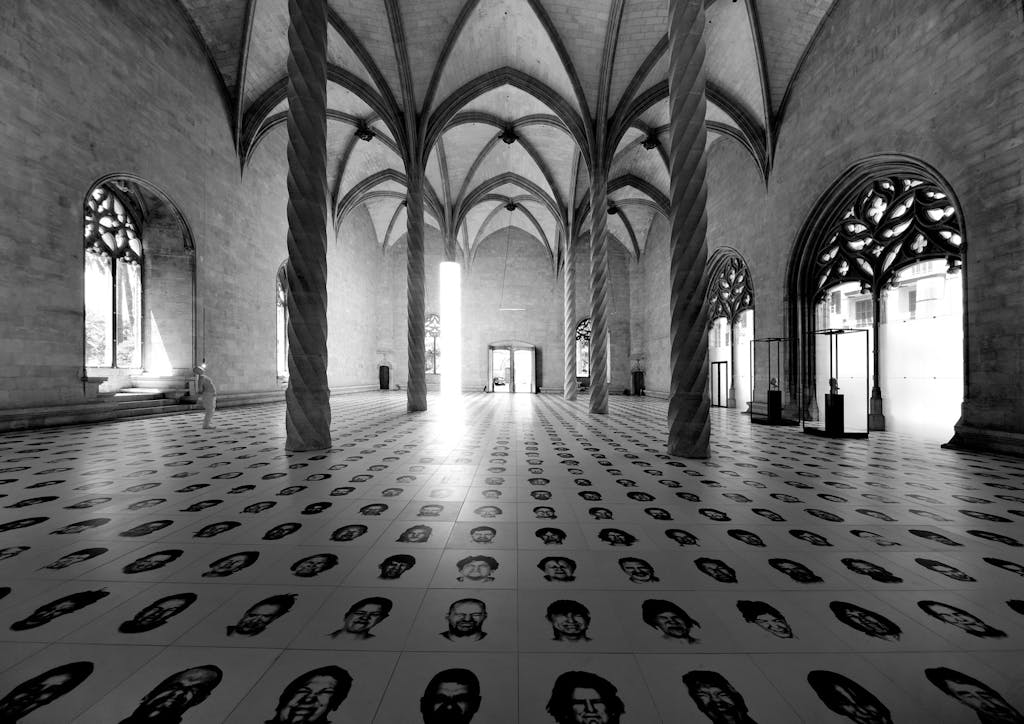In a series of continuous studies, Roig portrays and deforms the human face with intense, almost violent lines, as in the sequence of charcoal, graphite and ash drawings on paper titled ‘Father Face’ from 2017. Roig’s work is influenced by minimalism, manifesting itself in the frequent use of neon tubes or letters, the glaring light of which bestows an uncomfortable atmosphere to his installations. During the last two decades, resin sculptures of half exposed men with incriminating expressions have played a central role in the artist’s oeuvre. These sculptures often interact with the neon lights or other works by the artist, such as drawings or video clips. In relation to the exhibition spaces these installations develop an even more theatric radiance. Throughout his oeuvre, Roig often addresses the impact mass media has on the individual, questioning our ability to distinguish between fact and fiction, between what is crucial and what is trivial. Through the figurative aspects of his visual language, the artist explores obsessions and the deepest yearnings of the individual and constructs narratives about isolation and the passing of time, as in ‘Practices to Catch Time’ (2019). Over the last few years, Bernardí Roig has engaged with writers and other artists, working within a dialectic strategy with inherited images; images taken from a re-appropriation of other texts or figures as well as from a re-reading of the traces and the destinies inscribed in them.
Bernardí Roig lives and works between Binissalem and Madrid. His work has been shown in many international exhibitions, such as the 54th Venice Biennale; BOZAR Palais des Beaux-Arts, Brussels; Alte Pinakothek, Munich; Centre for International Light Art, Unna; Kunstmuseum, Bonn; Palazzo Fortuny, Venice; MUNTREF, Buenos Aires; Canterbury Cathedral, Kent, New Zealand; The Phillips Collection, Washington DC; Museum Residenzgalerie, Salzburg; and IVAM, Valencia, amongst others.
